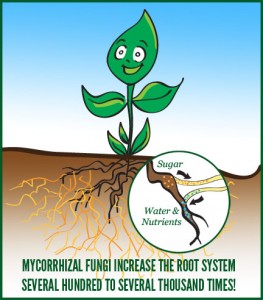One of the chief reasons why agriculture has to undergo a revolution in design is that one day soon the oil supply will decline. Most of the total agricultural system (our food supply) is sourced from crude oil. This is the single biggest factor in fertiliser production, and non-organic food supply is completely dependent on fertiliser as well as oil-powered machinery. If the oil price rises then so will the price of all foods. This is independent of the food miles necessary to bring all our food to our table.
What is ironic is that much of Europe is high quality agricultural land, and for centuries we all grew nearly all our food within a mile or so of our towns. All of this completely without the use of any oil. So basically, getting food is possible, we just have to do it differently.
Much of western food is also heavily dependent on meat, and the meat is heavily dependent on foodstuffs imported from far and wide. The livestock may be home grown, but the foodstuffs are typically grown in the third world, and the foodstuffs are grown on prime land that could be used to support local populations. However, the prices payable by the West are above what the local population can afford. And so our cows eat better than Mexicans.
A much more vegan diet can support Europeans and Americans using permaculture farming methods on their own land without the need for any food imports. This would be much better as it would allow all the other countries to feed themselves without the need to tear down more forests.
Permaculture largely avoids the use of pesticides, herbicides and artificially provided nutrients, as they are all damaging to the surrounding flora and fauna of the crops. The word “crops” here means wood, honey and many other products besides food.
Permaculture is a method of agriculture that allows wildlife to exist on the land, and wherever possible allow natural mechanisms to assist with agriculture rather than oppose agriculture. Pest control can be assisted by wild or domestic animals, and plants with natural herbicide, fungicide or pesticide tendencies. The micorrhizal networks between plant roots, made up of bacteria, micro-organisms and fungus actively transport nutrients between plants. These take time to establish, and combine the abilities of plants. Various combinations of plants and animals form symbiotic relationships, resulting in healthier and greater productivity. These techniques do not need artificial fertilizer, and so greatly reduce the need for fossil fuels within agriculture.
Gardening usually involves carting away carloads of ‘waste’. Permaculture composts nearly everything in order to recycle all the dead and decaying plant matter back into the soil. This avoids the dependence on fertiliser. It takes a lot of learning and observation – come along and find out more…
Tilling the soil by large machines destroys the mycorrhizal networks within the soil, rips up roots, brings weed seeds to the surface where they germinate, and obviously needs a lot of fuel to run. No-till food production uses the soil’s and plant’s abilities to regenerate, and generally plays to nature’s strengths.
Since the basic premise is a low and beneficial impact on the land, it is surprising the amount of land that can be harnessed. Modern agriculture insists on large and level fields in order to be open to large agricultural vehicles, this leaves a vast amount of land in small and uneven patches to go wild, or be left as industrial wasteland. By using all this land for suitable food or pastoral purposes whilst leaving plenty of wild access, it is possible to bring under cultivation a huge new resource. This leaves less necessity on the provision of food from conventional farms. These farms, which are sometimes small, nonetheless use inputs derived from elsewhere that need much much more land. The conversion of all this land to permaculture releases vast expanses of third world land either to third world farming directly, or to manage a transition back to natural habitat. The proper use of these lands, covered next, also bring about more food and other products directly for third world peoples.




